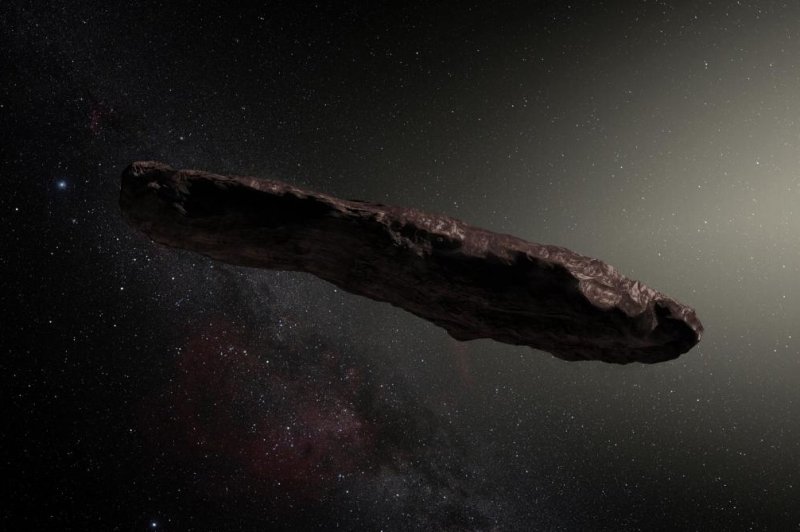An artistic rendering of ‘Oumuamua. Photo by ESO / M. Kornmesser
March 19 (UPI) -- The solar system's first-documented interstellar visitor, 'Oumuamua, likely began its journey in a binary star system, new research suggests.
Scientists have previously hypothesized that 'Oumuamua's unusual path and behavior can be explained by a violent past -- a collision that sent it tumbling through the Milky Way. Now, scientists believe that collision likely occurred in a binary star system, which features two stars orbiting one another.
'Oumuamua first appeared in October of last year. Scientists first thought it was a comet, but when the orb swung around the sun without melting, researchers determined it was most likely an asteroid. However, follow up studies showed the orb is a unique combination of rock and ice.
Scientists recent suggestion that 'Oumuamua hails from a two-star system is based on planetary models. Binary star models showed icy and rocky objects are ejected in equal numbers during the planetary formation process. Our solar system mostly ejects comets, which suggests the asteroid 'Oumuamua likely came from a planetary system different from our own.
"It's really odd that the first object we would see from outside our system would be an asteroid, because a comet would be a lot easier to spot and the Solar System ejects many more comets than asteroids," Alan Jackson, a postdoctoral researcher at the Center for Planetary Sciences at the University of Toronto Scarborough, said in a news release.
Researchers detailed their hypothesis this week in the journal Monthly Notices of the Royal Astronomical Society: Letters.
Almost everything about 'Oumuamua is odd. Though 'Oumuamua boasts rocky outer layers and is classified as an asteroid, astronomers believe its inner core is composed of ice. What's more, the asteroid doesn't move all that much like an asteroid.
A study of 'Oumuamua published earlier this year showed the orb features a unique tumbling pattern -- reorienting itself sporadically. Astronomers believe the space rock will continue to tumble for billions of years.
There is still much about 'Oumuamua that scientists don't understand, but researchers hope their continued analysis of the object will help them better understand the nature of other planetary systems.
"The same way we use comets to better understand planet formation in our own solar system, maybe this curious object can tell us more about how planets form in other systems," Jackson said.















